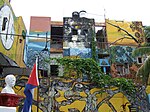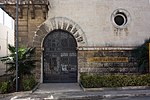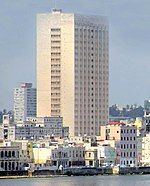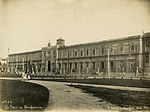Paseo de Tacón
Buildings and structures in HavanaHistoric districtsHistory of HavanaMunicipalities of HavanaNeoclassical architecture in Cuba ... and 2 more
Streets in HavanaWards of Havana

The Paseo de Tacón, or Paseo Militar, was created by the Captain General (Spanish: Capitanía General de Cuba) Miguel Tacón y Rosique (1834–1838) who promoted the reform of the “road” that, starting from the calles of San Luis de Gonzaga (Reina) and Belascoáin, connected to the Castillo del Príncipe. Calle Belascoáin was the edge between the city and the countryside.
Excerpt from the Wikipedia article Paseo de Tacón (License: CC BY-SA 3.0, Authors, Images).Paseo de Tacón
Avenida Salvador Allende (Carlos III),
Geographical coordinates (GPS) Address Phone number Website Nearby Places Show on map
Geographical coordinates (GPS)
| Latitude | Longitude |
|---|---|
| N 23.131 ° | E -82.3744 ° |
Address
Centro Comercial Carlos III
Avenida Salvador Allende (Carlos III)
10300 (Pueblo Nuevo)
Havana, Cuba
Open on Google Maps










